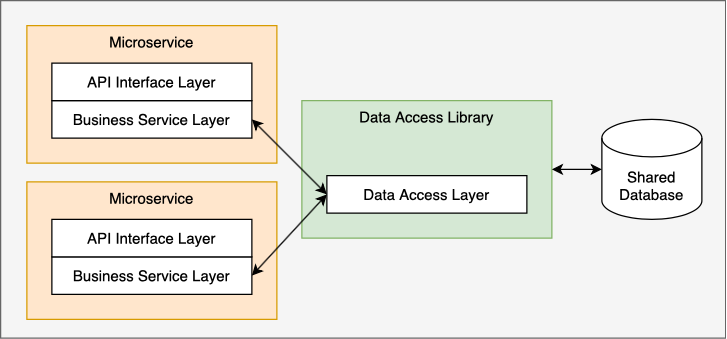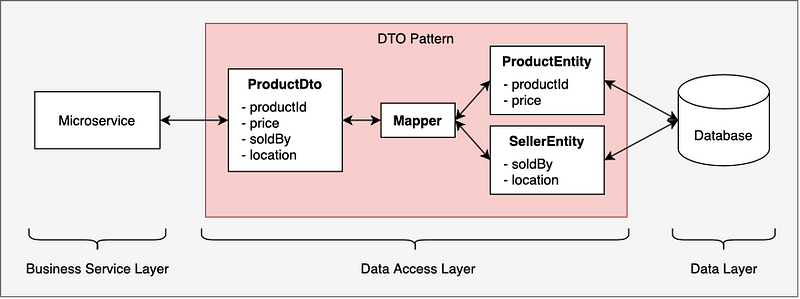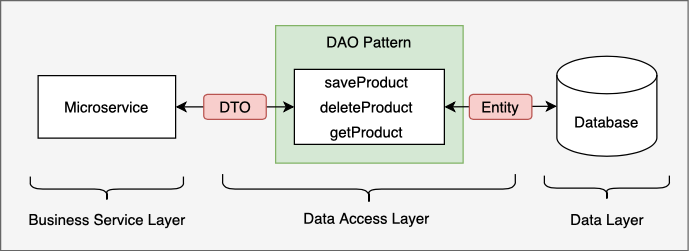Exploring the Benefits of a Data Access Layer for Microservices
Written on
Chapter 1 Understanding the Data Access Layer (DAL)
The Data Access Layer (DAL) is a well-established concept in software development. After experimenting with it for a few months, I felt it was the right time to share my insights and how I've implemented the DAL in my small projects, which involve several backend microservices using a unified data access library.

The primary purpose of a DAL is to provide abstraction. It manages data operations such as creating, reading, updating, and deleting (CRUD). Implementing a DAL offers several benefits:
- Flexibility to switch databases or data sources, like transitioning from MySQL to MongoDB.
- Separation of data access logic from business logic, allowing each to evolve independently.
- Encapsulation of data, enabling any microservice to interact with the data seamlessly.
Every developer tends to utilize the DAL concept, whether through a Data Access Object (DAO), Data Transfer Object (DTO), or by simply organizing the database access logic separately.
Section 1.1 Introducing the Data Access Library
While it’s possible to implement DAL concepts within the codebase of each microservice, those working with multiple microservices might benefit from a shared external data access library. This library contains all necessary data access logic, including CRUD operations.

Disclaimer: Utilizing a shared library can be viewed as an anti-pattern in microservice architecture, which ideally promotes a single database for each microservice to maintain loose coupling and single responsibility. However, smaller projects or those transitioning from a monolithic structure may not afford the luxury of multiple databases.
For this article, the focus is on small projects that utilize a single shared database for all microservices. Thus, you can either have a common shared data access library or organize libraries by features.
Subsection 1.1.2 Option B: Grouping Libraries by Features
To minimize redundant logic, you might opt to create multiple data access libraries categorized by features instead of relying on a single shared library. The decision depends on the project's scale and the number of contributors. However, excessive libraries can complicate maintenance, necessitating a reevaluation of your microservice architecture.
Section 1.2 Implementing the Data Access Library
Regardless of whether you choose a shared library or multiple specialized libraries, the implementation steps remain consistent. Here’s a brief overview of the essential components required to create a data access library.
#1 — Data Transfer Object (DTO) & Entity
The DTO pattern decouples the DAL from the business service layer, facilitating data transfer without exposing the internal workings of the library.

#2 — Data Access Object (DAO)
This pattern provides an abstract interface for database interactions. While the DTO handles data transfer, the DAO manages CRUD operations, encapsulating the data access logic specific to business requirements.

#3 — Integration Testing
Integration testing is vital for ensuring that your DAO logic functions correctly with the database and that any changes to the data access library are compatible with the microservices utilizing it.
Chapter 2 Conclusion: Is a Data Access Library Worth It?
The answer depends on your project size. For smaller projects, a common data access library can streamline operations, particularly when a single shared database is in use. It simplifies code maintenance and enhances readability while encouraging developers to implement integration tests.
However, keep in mind that a shared library may become bloated with redundant code. Even if you opt for separate databases, the principles of the DAL can still be applied.
This article summarizes my experiences and insights regarding DAL concepts in small projects with shared databases. While this approach may not suit every scenario, especially when it introduces coupling, I hope it serves as a useful resource for new developers and engineers.
If you found this article helpful, consider following me for future insights! I'll be sharing an example of implementing and testing the data access library in Spring Boot.
Thank you for reading!
Video: Building a Data Access Layer: Update Your Data! - This video provides a detailed guide on creating a robust Data Access Layer for your applications.
Video: Does a Data Access Layer make it easier to change your Database? - Explore how a Data Access Layer can simplify database transitions and modifications.
Level Up Coding
Thank you for being part of our community! Before you leave, please consider clapping for this article and following the author. For more content, visit our Level Up Coding publication, and check out our free coding interview course. Join the Level Up talent collective for exciting job opportunities!